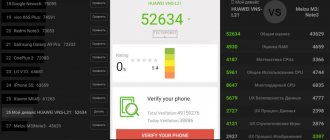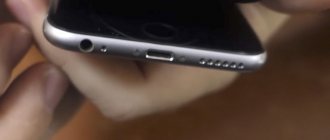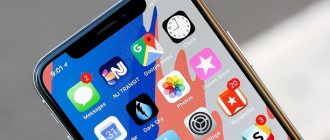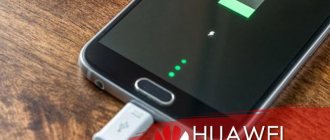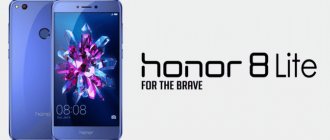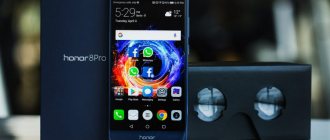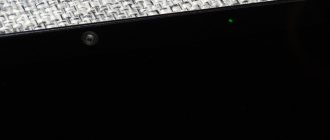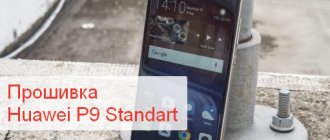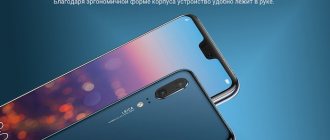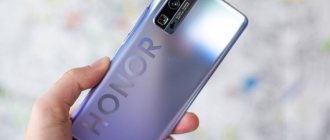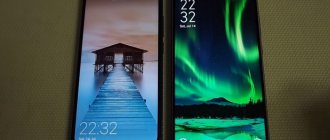Camera and mobility
Gradually, in the more or less calm Android world, not only the difference in the equipment and characteristics of the displays, but also the quality of the camera located on the back of the smartphone became the most important. This becomes especially noticeable when it comes to the top segment. The P20 has a dual camera on the front, consisting of a combination of a 12-megapixel RGB matrix and a 20-megapixel monochrome one. Thus, theoretically, it is possible to obtain photographs with a maximum resolution of 20 megapixels, but in order to talk about good shooting quality, good lighting conditions are required. For this reason, Huawei itself has made the standard resolution 12 megapixels in the settings. We took our test images with the manufacturer's preset settings, and not at the highest possible resolution. Dual LED flash provides plenty of artificial light. In camcorder mode, the P20 shoots at maximum 4K resolution. The setup is complemented by a front camera with a resolution of as much as 24 megapixels. Our experts from the Chip test laboratory rated the resulting photos as very good.
During testing, the P20 camera performed very well
When testing the battery, the P20 currently receives "only" an overall good rating in this parameter. But here, of course, we are talking about comparative characteristics in relation to other smartphone models we tested. Moreover, the results themselves are quite suitable for practical use. The capacity of the easily replaceable battery is 3500 mAh, which is rather average compared to direct Android competitors. Our measurements yielded a very respectable 10 hours of battery life in an “online” scenario, in which we use a specially designed test website with integrated video that reloads every 90 seconds. In this way, we reproduce a scenario for web surfing on a smartphone that is realistic and in line with modern trends. It’s also good that Huawei includes a power supply for fast charging in the P20 package, and the full process of replenishing the battery’s energy reserves takes a tolerable 2 hours.
Since the P20, in addition to everything, deserves praise for its profile of 9.1 mm and a weight of only 163 grams, the autonomy and mobility of this model are at a high level.
Buy Huawei P20 and iPhone X and at what price
The difference in the cost of these devices is very large; if the price of Huawei P20 in Russia starts from 40 thousand rubles, then the simplest iPhone model with 64GB of internal memory costs from 65 thousand, and with 256GB - from 75 thousand. And people pay 50% of this cost just for the brand.
Huawei P20 reviews
Pros:
- High performance
- High quality display
- Great camera
- 4GB RAM
- Reasonable price for a device of this level
Minuses:
- Not detected
iPhone X reviews
Pros:
- High performance
- High quality display
- Great camera
Minuses
- Poor autonomy
- Very overpriced
- Shuts down in cold weather
- Inability to freely download applications from the network
- No fingerprint scanner
Features and test results of Huawei P20
| Price-quality ratio | 68 |
| OS during testing | Android 8.1 with EMUI 8 |
| Current OS | Android 8.1 |
| Is there an OS update planned? | no data |
| App Store | |
| Weight | 163 |
| Length x Width | 149 x 72 mm; |
| Thickness | 9.1 mm; |
| Expert design review | Great |
| Expert assessment of work speed | Very good |
| Download speed: PDF 800 KB via WLAN | 1.6 s |
| Download speed: main chip.de via WLAN | 0.4 s |
| Download speed: chip.de test chart via WLAN | 6.1 s |
| Sound quality (speakerphone) | Very good |
| CPU | HiSilicon Kirin 970 |
| Processor architecture | |
| CPU frequency | 2.400 MHz |
| Number of CPU cores | 4+4 |
| RAM capacity | 4.0 GB |
| Battery: capacity | 3.500 mAh |
| Battery: easy to remove | — |
| Battery: surfing time | 10:07 h:min |
| Battery: charging time | 2:01 h:min |
| Fast charging function | Yes |
| Charger and fast charging cable included | |
| Battery: discharging time/charging time | 5,0 |
| Wireless charging function | — |
| WLAN | 802.11n, ac |
| Voice over LTE | |
| LTE: frequencies | 800, 1.800, 2.600 MHz |
| LTE: Cat. 4 | up to 150 Mbit/s |
| LTE: Cat. 6 | up to 300 Mbit/s |
| LTE: Cat. 9 | up to 450 Mbit/s |
| LTE: Cat. 12 | up to 600 Mbit/s |
| Screen: type | LCD |
| Screen: diagonal | 5.8 inches |
| Screen: size in mm | 64 x 133 mm; |
| Screen: resolution | 1.080 x 2.244 pixels |
| Screen: Dot Density | 429 ppi |
| Screen: max. brightness in a dark room | 444.8 cd/m² |
| Screen: staggered contrast in a bright room | 48 :1 |
| Screen: staggered contrast in a dark room | 139 :1 |
| Camera: resolution | 19.7 megapixels |
| Camera: measured resolution | 1,412 line pairs |
| Camera: expert assessment of image quality | Very good |
| Camera: VN1 noise | 1.1 VN1 |
| Camera: minimum focal length | 4.0 mm; |
| Camera: minimum shooting distance | 7 cm; |
| Camera: Shutter Time with Autofocus | 0.84 s |
| Camera: optical stabilizer | — |
| Camera: autofocus | Yes |
| Camera: flash | Double LED, LED |
| Video resolution | 3.840 x 2.160 pixels |
| Front camera: resolution | 11.8 megapixels |
| LED indicator | yes (multicolor) |
| Radio | — |
| SIM card type | Nano-SIM |
| Dual SIM | Yes |
| Protection against dust and moisture (IP certificate) | — |
| Fingerprint's scanner | |
| User accessible memory | 111.0 GB |
| Memory card slot | — |
| USB connector | Type-C-USB 3.1 |
| Bluetooth | 4.2 |
| NFC | Yes |
| Headphone output | -; |
| HD Voice | Yes |
| SAR | 0.76 W/kg |
| Firmware version during testing | 8.1.0.106 |
| Test date | 2018-03-21 |
KV.by
From time to time, the Chinese company Huawei reminds smartphone users that their products are a good replacement for iPhones. The breakthrough that Huawei made with its flagship with a triple camera, the Huawei P20 Pro, in the premium smartphone segment, made it clear that it was time for the Cupertino company to nervously smoke on the sidelines. Today we will try to compare the Huawei P20 Pro and iPhone X smartphones.
Specifications
Huawei P20 Pro is a 2021 smartphone, weighing 180 g and measuring 155 x 73.9 x 7.8 mm. It is equipped with a 6.1-inch screen, triple camera (40 MP+20 MP+8 MP), 128 GB memory + 6 GB RAM. Works Quad-core, Cortex-A73, 2400MHz + Quad-core, Cortex-A53, 1800MHz.
Apple iPhone X smartphone from 2021, weighing 174 g and measuring 143.6 x 70.9 x 7.7 mm. It is equipped with a 5.8 inch screen, 12 MP camera and 64/256 GB + 3 GB RAM. Its processor is Quad-core, Mistral, 2390MHz + Dual-core, Monsoon, 2390MHz.
| Camera and video Huawei P20 Pro iPhone X | ||
| Main camera | 40 MP, Triple: 40 MP RGB (f/1.8, 1/1.7", OIS) + 20 MP Monochrome (f/1.6) + 8 MP (f/2.4), Leica optics, 3x optical zoom, laser autofocus | 12 MP, Dual: 12 MP, (f/1.8, 28mm) + 12 MP (f/2.4, 52mm), OIS, 2x optical zoom |
| Built-in flash | dual-LED dual-tone flash | dual-LED (dual tone) flash |
| Video | [email protected] , 1080p, [email protected] , shooting in UHD 4K 3840×2160 | [email protected] /30/60fps, [email protected] /60/120/240fps, 4K shooting |
| Front-camera | 24 MP, autofocus, f/2.0, 1080p, 5 unique 3D lighting modes when shooting | 7 MP (f/2.2, 32mm), [email protected] , [email protected] , face detection, HDR |
| Screen | Huawei P20 Pro | iPhone X |
| Technology | OLED | Super AMOLED |
| Touchscreen | Capacitive touchscreen | Capacitive touchscreen |
| Color depth | 16M | 16M |
| Size (Diagonal) | 6.1″ inches | 5.8″ inches |
| Permission | 1080 x 2240 | 1125 x 2436 |
| Pixel Density (PPI) | 408 | 458 |
| Other properties | Multitouch proprietary shell EMUI 8.1 | Multitouch |
Appearance
Huawei P20 Pro can definitely be called the most innovative smartphone released since the beginning of 2018. And the first argument is the triple camera, created under the leadership of Nokia native Ero Salmelin, which makes it the most functional device in the world in terms of photography.
If we compare the phones in appearance, they are similar, but only at first glance. For example, both have a back panel made of glass, and both are protected from moisture and dust according to the IP67 standard. But there are more differences. The front surface area of the P20 Pro is, although not much, larger than that of the iPhone. Both have the famous “unibrow”, but the Chinese flagship has it two times smaller and contains more useful information.
The placement of the cameras is similar, but Huawei has placed the camera and the logo with meaning or intent - to show that this smartphone is also a camera. How do we hold cameras? That's right, horizontally. So the P20 Pro should be held horizontally when shooting. Both lack a 3.5 mm jack, but Huawei immediately included an adapter in the box. Both models also have Face ID, but the P20 Pro also has a fingerprint scanner on the front Home button, which has no equal in speed and accuracy.
Performance
Huawei P20 Pro and Apple iPhone X were compared in speed, and it was captured on video. Both devices are the most powerful flagships from Huawei and Apple, respectively, and both have very good performance.
The first stage of the test was to open 16 applications and games to determine which of the two phones would do it faster. The Huawei P20 Pro launched apps like Twitter, Instagram and YouTube faster, while the Apple iPhone X was faster at opening heavy apps and games like Temple Run 2, Dead Trigger 2 and Asphalt 8.
But when it comes to the second step of reopening apps, the P20 Pro performed best. Huawei's flagship managed to keep all apps open in the background, while Apple's iPhone X had to restart most apps and games. This is because the Apple device does not have enough memory to open all these apps at once, which is not surprising since the Huawei P20 Pro comes with 6GB of RAM while the Apple iPhone X comes with just 3GB of RAM.
Camera
Most impressively, the Huawei P20 Pro's main camera outperforms the iPhone X. DxOMark, the respected industry standard for independently measuring image quality and rating digital cameras, lenses and smartphones, gives the P20 Pro its highest score and the No. 1 ranking. Huawei P20 has long been in second place among devices with a dual camera, but a couple of weeks ago it dropped one step lower after HTC. iPhone X is in sixth position, receiving the same number of points along with Huawei Mate 10 Pro.
The P20 Pro's excellent performance in low-light conditions, as well as its brilliantly implemented 3x optical and 5x hybrid zoom, played a major role in the P20 Pro's high praise.
Huawei engineers were especially good at “Night Mode,” designed for filming in low-light conditions. When it is engaged (this can be done manually or automatically), several pictures of the object are taken within four seconds with different shutter speeds, apertures, and ISO values (up to 102400). And only then all the received information is combined into one frame.
It is worth mentioning separately about the very advanced image stabilization system, which also uses the Kirin 970 processor with a neural network module. For long exposure night photography, this is very important as it prevents blurring of the image. In our subjective opinion, in evening and night photography, the P20 Pro surpassed the recognized “night” leaders in mobile photography - the Samsung Galaxy S and Apple iPhone X series smartphones.
The main difference: in the Huawei P20 Pro, the smartphone's neural network algorithms take the liberty of embellishing reality: you don't even have to apply a filter on Instagram. When “smart” automation is working, the smartphone displays a small plate with the name of the corresponding shooting scenario (if you want to take a photo without the help of AI, just click on the cross next to the prompt).
We are accustomed to the fact that each new generation of smartphones is a little better than the previous one. But when you see pictures taken with the P20 Pro, you realize that this is a leap forward by several generations. The P20 Pro excels in low-light conditions, does a good job of simulating bokeh, and does a great job with video.
The ability to choose the best camera for a given shooting situation and programmatically combine image data from all three sensors means that the new Huawei beats the competition in almost all respects.
In video shooting, the Huawei P20 Pro has positive features: fast and accurate autofocus, high-quality stabilization and subject tracking, low noise in all situations, good exposure in low light.
As we can see, the iPhone X scored 97 points. The iPhone X's dual camera is mounted vertically and has dual optical image stabilization; another difference with the 8 Plus is the ƒ/2.4 aperture (instead of ƒ/2.8). It is also worth noting that, unlike the iPhone X, the front camera on the P20 Pro has a resolution of 24 MP.
Brands
According to experts, the high popularity of Huawei smartphones is caused by the abundance of models in different price categories and aggressive promotion. Also, the growth shown by Huawei smartphones can be partly associated with a drop in interest in Apple smartphones, market researchers say. At this time of year, iPhone sales traditionally decline, while gadgets from other manufacturers with more affordable pricing policies, on the contrary, are in high demand.
And this is not all the successes of the Chinese company: the authoritative analytical company IHS Markit conducted a study, which revealed that last year Huawei became the largest manufacturer of telecommunications equipment in the world. The Chinese company managed to increase its market share from 25% to 28%. Previously, the leading position was held by the Swedish company Ericsson, whose share was also 28%, but last year it fell to 27%. The third place in the global telecommunications market is still occupied by Nokia, whose share is 24%.
But Apple is not doing so well. The American business publication Fortune published an annual ranking of the 500 largest American companies, which takes into account the company's turnover.
The turnover of Fortune 500 companies accounts for two-thirds of the US gross domestic product, which in monetary terms is equal to $12.8 trillion. They have a market capitalization of $21.6 trillion, total revenues exceeding $1 trillion, and employ 28.2 million people worldwide.
Apple, which ranked third in the rankings for the past two years, dropped to fourth place. Huawei, on the contrary, has risen and is already ranked 79th.
conclusions
With the release of Huawei P20 Pro, the Chinese company made its most serious bid ever to break the Apple\Samsung duopoly in the market of expensive and functional phones.
ID Face, loud stereo speakers and Dolby Atmos sound, a very high-quality OLED screen with a resolution of 2240 by 1080 pixels (FullHD+, 19:9): and all this for a relatively affordable price. The choice is up to the user, but this is where we recommend the P20 Pro.
Conclusion
The Pixel 2 came out on top in one test and came in second in two more, which shows how well its camera performs despite only having one module. It's safe to say that no Pixel 2 user will be disappointed with its camera performance.
Apple iPhone X has two victories and one second place. It is noteworthy that Apple's flagship has become a leader in photographing everyday situations that each of us films - blue skies, country views and food. So in most situations you will be happy with your photos.
The Huawei P20 Pro came out on top in four tests, each of which really highlights the camera's strengths.
The Galaxy S9 Plus also won two tests, but it didn't perform the best in the four tests in which the P20 Pro came first, and this affected the final score. In our testing, the S9 Plus's photo quality is excellent, and it's hard to find a situation where the flagship's camera fails to produce a fantastic photo.
The leader of our review, as you already understood, was the Huawei P20 Pro, which confidently won four tests, each of which demonstrates the advantages of the Huawei flagship camera - zoom shooting, low-light shooting and portrait photography - and also shows how the P20 camera Pro is ahead of the competition.
Does this mean that Huawei offers the best camera and when choosing a smartphone, preference should be given to it? It is difficult to give a definite answer to this question.
The Galaxy S9 Plus might be a more logical choice for the average user who doesn't need the P20 Pro's superior feature set and excellent cameras with excellent monochrome mode.
For those who are interested in mobile photography, the Huawei flagship can be a real find. More useful information and news in our Telegram channel “Lessons and secrets of photography”. Subscribe! Read us on Yandex.Zen “Secrets and tricks of photography.”
Tags: Google Pixel, Huawei, iPhone, Samsung, Reviews, Cameras
About the author: spp-photo.ru
- Related Posts
- Comparison of Nikon D7200 and D7100
- Nikon D750. Review of the new full-frame camera
- Nikon 500mm f/4E VR review. Part 2
« Previous entry
ULTRA Wide Angle Shots
It’s no coincidence that I wrote it in caps: both smartphones have monstrous sensors with image capture at 120 degrees. This is practically the point of view of the human eye, just look:
Impressions from the photographs are mixed: it is clear that the iPhone conveyed the shades of gray skies much better and more voluminously.
However, in the P30 Pro photo I like the colors of the houses better, because in real life they are not as bright as I saw on the iPhone 11 Pro.
The next couple of photos were taken with an ultra wide angle lens in the evening, around 19:00. Feel the intrigue:
More night photos are below, and everything is completely ambiguous there. In the meantime, here’s another example of shooting wide:
The shot from Huawei turned out darker, but this benefited the color rendition: the sky is much more correct than the whitish something in the iPhone 11 Pro photo.
Let's move on to night shooting.
Huawei P30 Pro:
Wide-angle camera – 40 MP, 27 mm, SuperSpectrum (RYB) sensor, f/1.6 aperture. Optical image stabilization, phase detection and laser autofocus.
Ultra-wide-angle camera – 20 MP, 16 mm, f/2.2 aperture, 1/2.7-inch sensor, autofocus.
Telephoto camera – 8 megapixels, five times zoom, f/3.4 aperture, phase detection autofocus, optical image stabilization.
Additional ToF camera , which is responsible for determining the depth of the scene.
Huawei P30 Pro went on sale on April 13, 2021, iPhone 11 Pro on September 20. The difference between smartphones is 5 months.
Let's compare?
Blue sky
The P20 Pro uses artificial intelligence (AI) to adjust camera settings based on the scene you're shooting. In this photo he has switched to Blue Sky mode. And this is excellent proof that Huawei made the right decision by allowing the user to disable the artificial intelligence system, because in the picture taken the sky came out a rich blue color, but at the expense of details in the lower half of the frame.
The Galaxy S9 Plus also suffers from overly saturated skies and a lack of detail, especially in the right area of the frame.
Huawei P20 Pro
iPhone X
Galaxy S9 Plus
Pixel 2
So, we're left with the iPhone X and Pixel 2, and choosing between them has proven difficult.
The Pixel 2 managed to capture more detail in the furthest part of the castle, but did similar results in the rest of the frame to the iPhone X. However, the vibrant photos from the iPhone X are very popular around the world, so we decided to give it its first win .
Winner: Apple iPhone X
Church spire
Let's see how the cameras perform when working with zoom. Each of the photos below was taken using the camera's standard zoom function.
What do we see? The Pixel 2 is the only flagship without quality-preserving zoom, so it predictably comes in last place in this test.
Surprisingly, the iPhone X was only able to rise to penultimate place, and all because it failed to produce the same detailed images as the Huawei P20 Pro and Galaxy S9 Plus.
Huawei P20 Pro
iPhone X
Galaxy S9 Plus
Pixel 2
Both smartphones took high-quality photos in zoom mode, however, the result of the P20 Pro was better, and this is noticeable to the naked eye. Huawei's flagship deservedly takes first place. The sharpness and detail of the photo is simply amazing!
While previous rounds of comparison made it difficult to determine a clear winner, this time the favorite was obvious from the start.
Winner: Huawei P20 Pro
Battery life and performance
The most important characteristic when buying a new gadget is its performance. Nobody wants to suffer with lags and freezes after a month of work. Therefore, you need to monitor this indicator carefully.
iPhone 7 has a 4-core processor with a core frequency of 2.34 MHz and a 6-core graphics chipset.
The battery capacity of the “seven” is 1960 mAh. If you look at older iPhone models, this is a relatively good indicator. Moreover, we must take into account that the battery size is already increased due to the lack of a headphone jack. It’s scary to think what would have happened in the end if the wired headset had been left as the basic one.
Generally speaking, compared to older versions, iPhone 7 has increased in performance and speed. At first glance, all applications launch without problems and very quickly. But, judging by the reviews, after some time the device still occasionally freezes. It is quite possible that the fault lies not with the processor, but with the IOS system itself.
A comparison with the “seven” from Apple showed that the Huawei P10 is clearly in the lead. The Chinese smartphone has an eight-core processor: four cores operate at a frequency of 2.4 MHz, and four more have a frequency of 1.8 MHz.
The Huawei P10 battery has a capacity of 3200 mAh. This is almost one and a half batteries of an Apple device.
Briefly about the operation of the Chinese device: despite good RAM and a very powerful processor, Huawei sometimes overheats and begins to experience lags. But overall the device is decent.
Huawei P10
